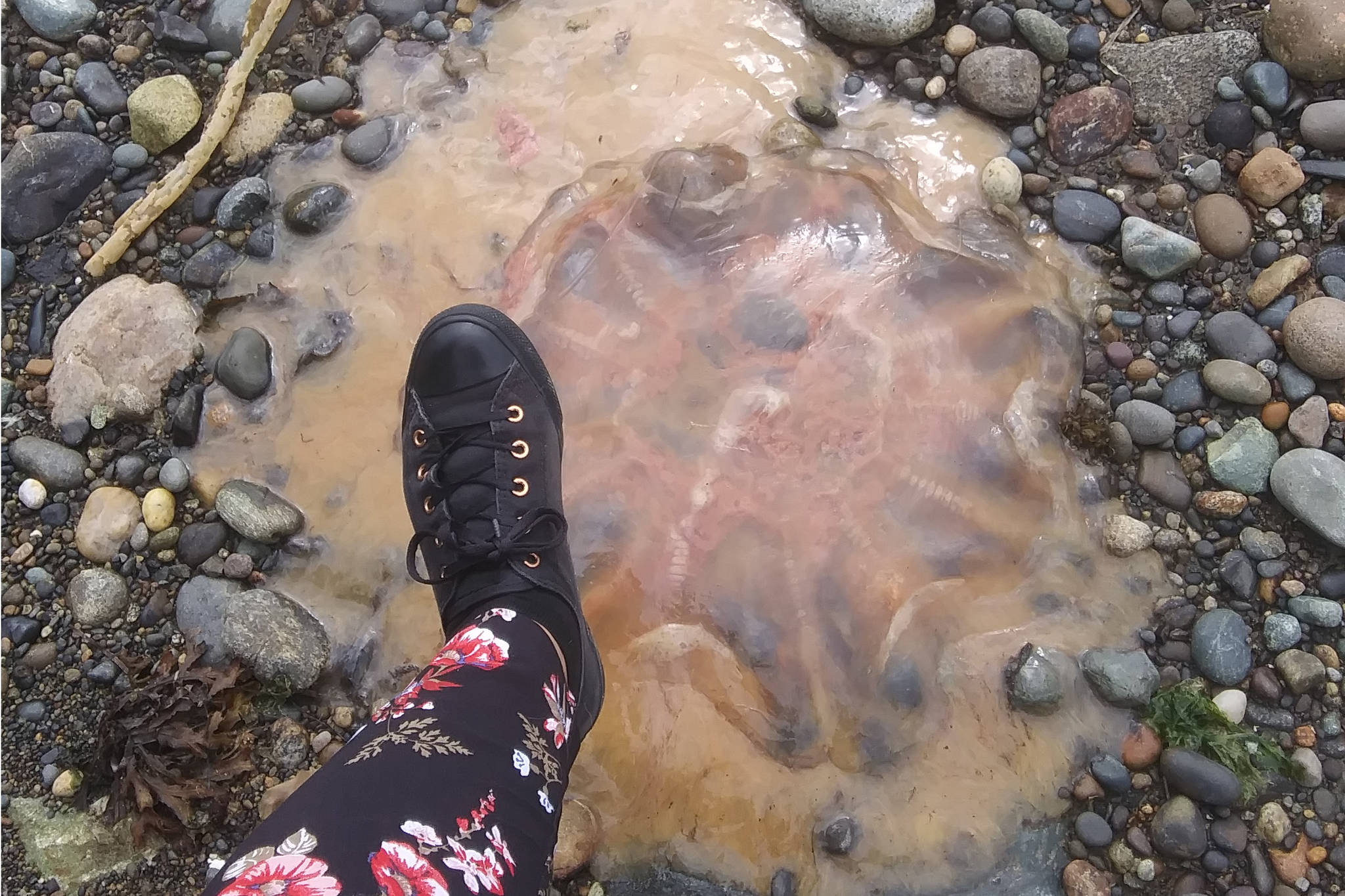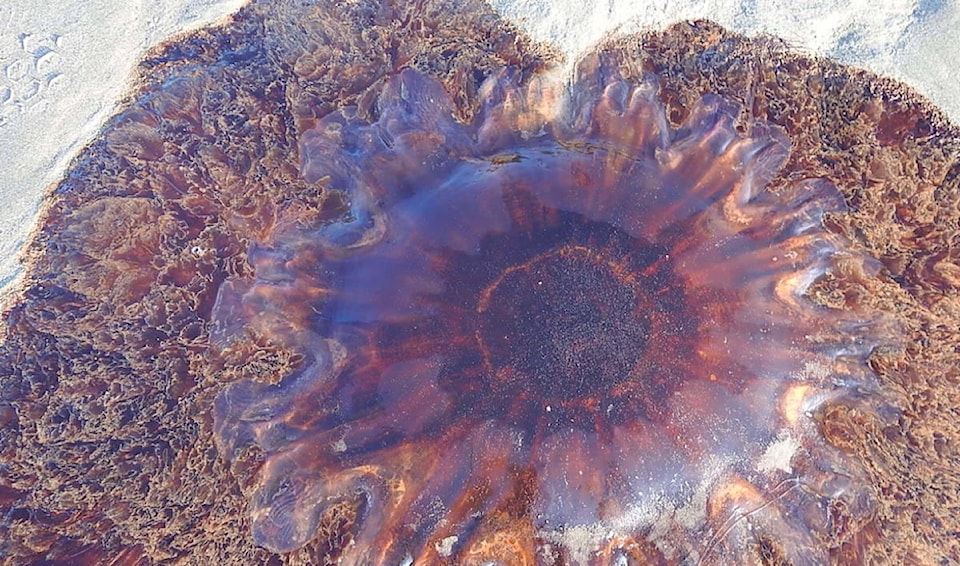Don’t be too alarmed by a mass beaching of lion’s mane jellyfish on the northern shores of Graham Island recently. The world’s largest jellyfish species was found dying by the dozens along the coast from Old Massett to Tow Hill.
While mortality events like this may be rare to Haida Gwaii, it is a seasonal phenomena in many parts of the northern hemisphere, including B.C.’s mainland coast, said jellyfish specialist Mackenzie Neale, a marine biologist and director of animal care with Vancouver Aquarium.
“Lion’s mane jellies have a big bloom every four years and that may be the case here…maybe for some reason they got washed into this particular area, when normally they would wash up somewhere else, but there’s no reason to be alarmed.
“Whether it’s a change in the wind direction, declining health or some other environmental factor, this time of year we start seeing them wash up on beaches…around B.C.”
| Lion's mane jellyfish |
The cold-water creatures are good swimmers but are ultimately at the mercy of winds and currents. They’re unable to detect shallow waters before the waves carry them to land.
If a decaying jellyfish does not wash out with the tide, Neale advises caution before moving it to the water. Lion’s manes are among the strongest stingers, even in death.
“The stinging cells can stay active even after the jelly has died and dried out. If it gets wet again those stinging cells can reactivate. So we advise people not to touch them — they’ll feel it.”
In their one-year lifespan, lion’s manes usually start growing around January or February, reaching average sizes of up to two or three feet in diameter by this time of year. By the end of their life they can reach up to seven feet across the bell, with tentacles extending 100 feet or more.
In mid-August Observer photographer Archie Stocker Sr. found one on North Shore he said measured about four feet across the bell.
“It seemed like an alien invader,” Stocker Sr. said.
READ MORE: Haida Gwaii swimmers plagued by jellyfish stings
Neale is unaware of the regularity of these beachings on Haida Gwaii, but they have been reported from other northern locations on B.C.’s mainland coast.
The Observer reached out to a marine biologist with the Council of the Haida Nation but they too were unsure of the frequency.
Last week one witness to the beaching, Sylvia Lutumailagi, said she counted more than 50 lion’s manes between Masset and Old Massett.
“The jellyfish were so big. I’ve never seen them that big ever,” she wrote in an email.
Lutumailagi saw what appeared to be a mass infestation of little white worms inside one of the jellyfish, but Neale said they were likely amphipods, a type of crustacean that can measure as small as one millimetre. They hitch rides on their hosts, feeding and reproducing in the folds of the feeding appendages and under the bells. Their broods are long, thin and white, resembling worms.
“Sometimes we’ll go out and collect wild jellies and they’re just riddled with these amphipods. In my experience I’ve never seen a jelly that’s infested with worms.”
Neal says there is a possibility beachings of lion’s manes may become more frequent on Haida Gwaii and elsewhere as jellyfish blooms worldwide are on the rise. With global warming, a sea temperature rise of just one degree will trigger extra reproduction cycles, while overfishing of finfish that compete for the same food as jellyfish allows lion’s manes to grow larger and more plentiful.
Haida Gwaii Observer
Newsroom
Send email
Like the Haida Gwaii Observer on Facebook
Follow us on Twitter

